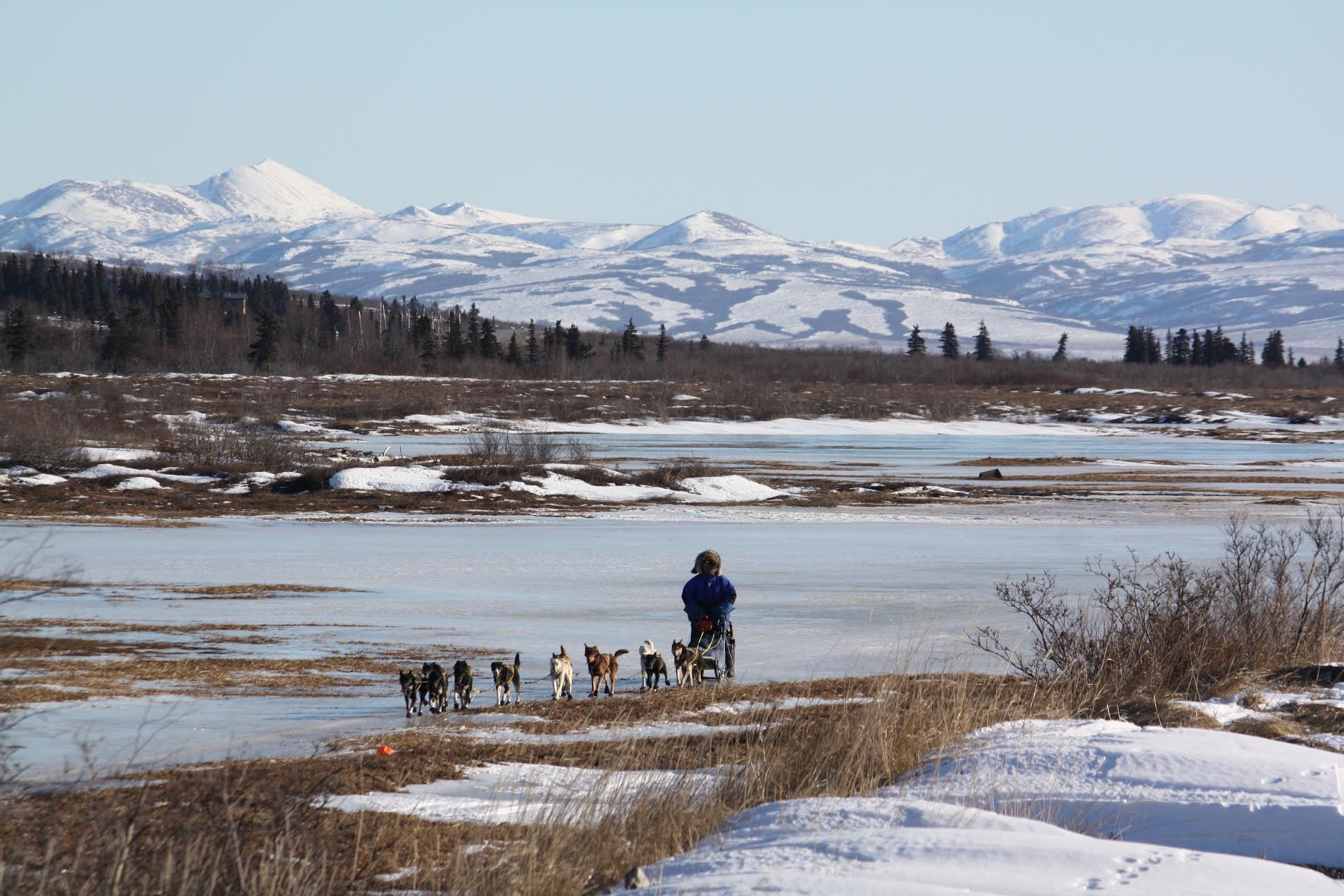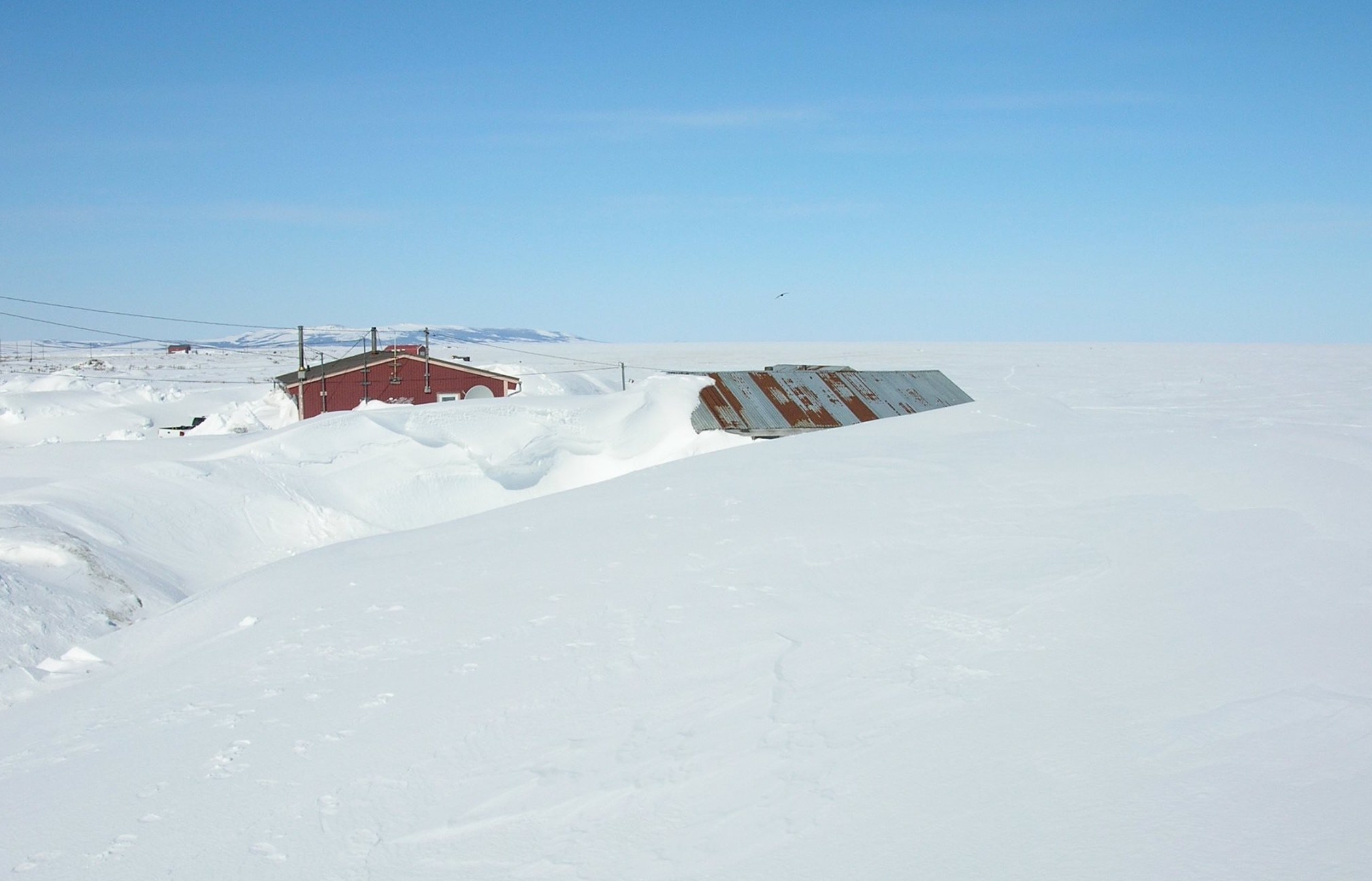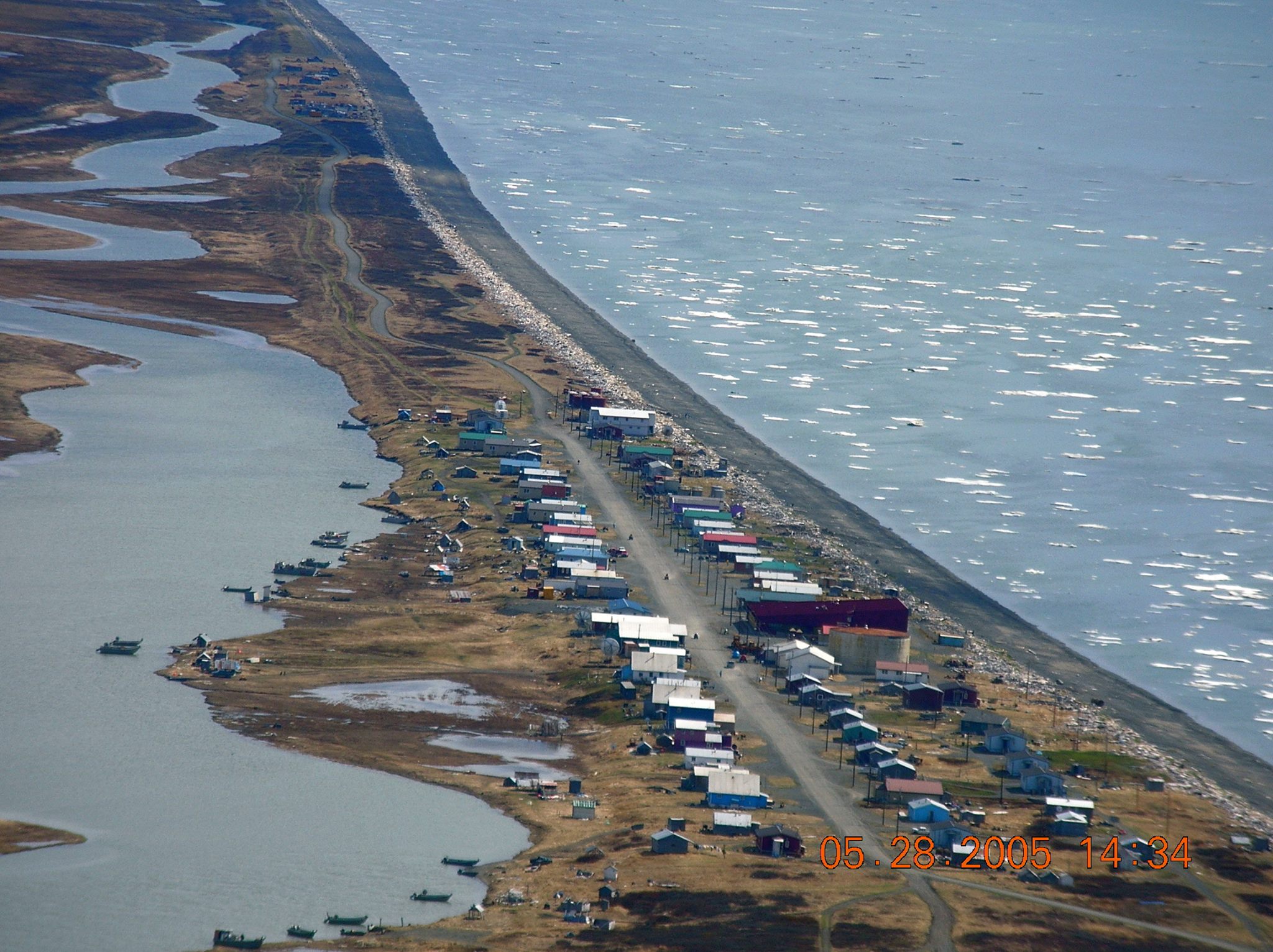
The lack of snowfall has hampered racers in the Iditarod as well as made hunting and travel between villages difficult. Photo by Fisher Dill
This is part one of a two-part series on how impact rapid climate change is affecting villages in Alaska. Read also Villagers Adapt to New Realities.
UNALAKLEET, AK (August 30, 2016) – The most rapid climate change in history will force Native Alaska villages on the coast of the Bering Sea to relocate to higher ground, develop alternative food sources, and possibly even alter cultural traditions, say scientists and Covenanters who live in the communities.
Three of the most imperiled villages in the state, according to federal studies, have Covenant churches—Shaktoolik, Golovin, and Unalakleet. In 2007, Alaska governor Sarah Palin formed the Alaska Climate Change Sub-Cabinet, which was charged with preparing and implementing an Alaska climate change strategy. The group’s study named the three villages as among 22 “priority action communities.”
Damage is occurring all along the coast. Laureli Ivanoff, a resident of Unalakleet, says, “The change has been rapid. In my lifetime, I have seen major changes in the climate and in our ecosystem. And that is shocking. In 30 years so much has changed. To think of where we’ll be 30 years from now is kind of scary.”
Over the past 60 years average annual air temperatures have risen three degrees—twice as fast as the global average. Scientists predict that average annual temperatures will climb another two to four degrees by 2050.
Such increases have led both to dramatic reduction in sea ice and to rising waters. The sea ice once provided a barrier against the storms for villages along the coast, but the melting ice has left those communities vulnerable. Storms have battered places like Shaktoolik, a village of 250 people that is one mile long and a city-block wide.

Lynda Bekoalok moved there 14 years ago. At the time, 50 feet of beach separated her house from the sea. Now the beach has shrunk to only 30 feet. She says she knows that the rising water, coupled with the severe erosion, will one day claim her home. It already has been threatened by several major storms and floods in recent years. “Those storms never happened before,” she notes.
The Army Corps of Engineers has erected a berm of natural materials to try to stave off such damage, but no one knows how long it will hold.

Shaktoolik has lost 20 feet of beach to erosion since Lynda Bekoalok took this photo.
The lack of sea ice has imperiled hunting for the villagers. Seal and whale are diet staples, but even where the ice still exists it often is too thin to hold the hunters, says Fisher Dill of Unalakleet. He says they harvested few seals or whales this past season. Crabbing too has become dangerous.
Increasingly wet weather has made it more difficult to prepare the catch when they have it. “When we put pink salmon away, we cut and dry it for three to four days, using a specific technique,” Ivanoff says. But when summers are too wet they are unable to dry the salmon—which can affect their diet for the entire year.
Increased rainfall impacts food sources on land as well. Non-native plant species invade as temperatures warm. Such plants are destroying berries, another diet staple. Excess rain also ruins the fruit itself, says Victoria Kotongan, an environmental specialist in Unalakleet.
“When I was young, we only needed to go five miles to harvest caribou,” Ivanoff says. “Now you have to travel hundreds of miles up north.” The lack of snow has made it nearly impossible for snow machines to reach the caribou.
It also impedes travel between villages. Shaktoolik is hundreds of miles away from any road systems, and residents couldn’t access other villages last winter, Bekoalok says. “It made people edgy,” she adds.
Even blizzards are infrequent. There were none last year, says Kotongan. As part of a project administered by the Alaska Native Tribal Health Consortium to track snowfall visually, she placed cameras in Unalakleet, a village of 700 people.
The cameras took pictures every day for a year, and they chronicle a once unthinkable lack of snowfall. Where traditionally snow was piled as high as rooftops, much of the ground remained bare for much of the winter.
“I realize that this year, we could be completely be dumped with snow,” Ivanoff says. “But things are so drastic we don’t know what to expect. We used to know to expect tons of snow every winter. We never know what our seasons are going to bring.”
The environmental changes also may bring cultural changes. “Here in Alaska, our family time is out harvesting food and enjoying the country, spending time outdoors,” Ivanoff says. “Knowing my grandparents fished in the same area is special. There’s a real sense of solidarity with our ancestors knowing that it was meaningful to our ancestors.”
She adds, “It’s not just about getting food. Harvesting feeds our souls as much as it gives us nutrition.”

Thank you for this story. We need to know these effects on our Alaskan sisters and brothers. Lord, have mercy.